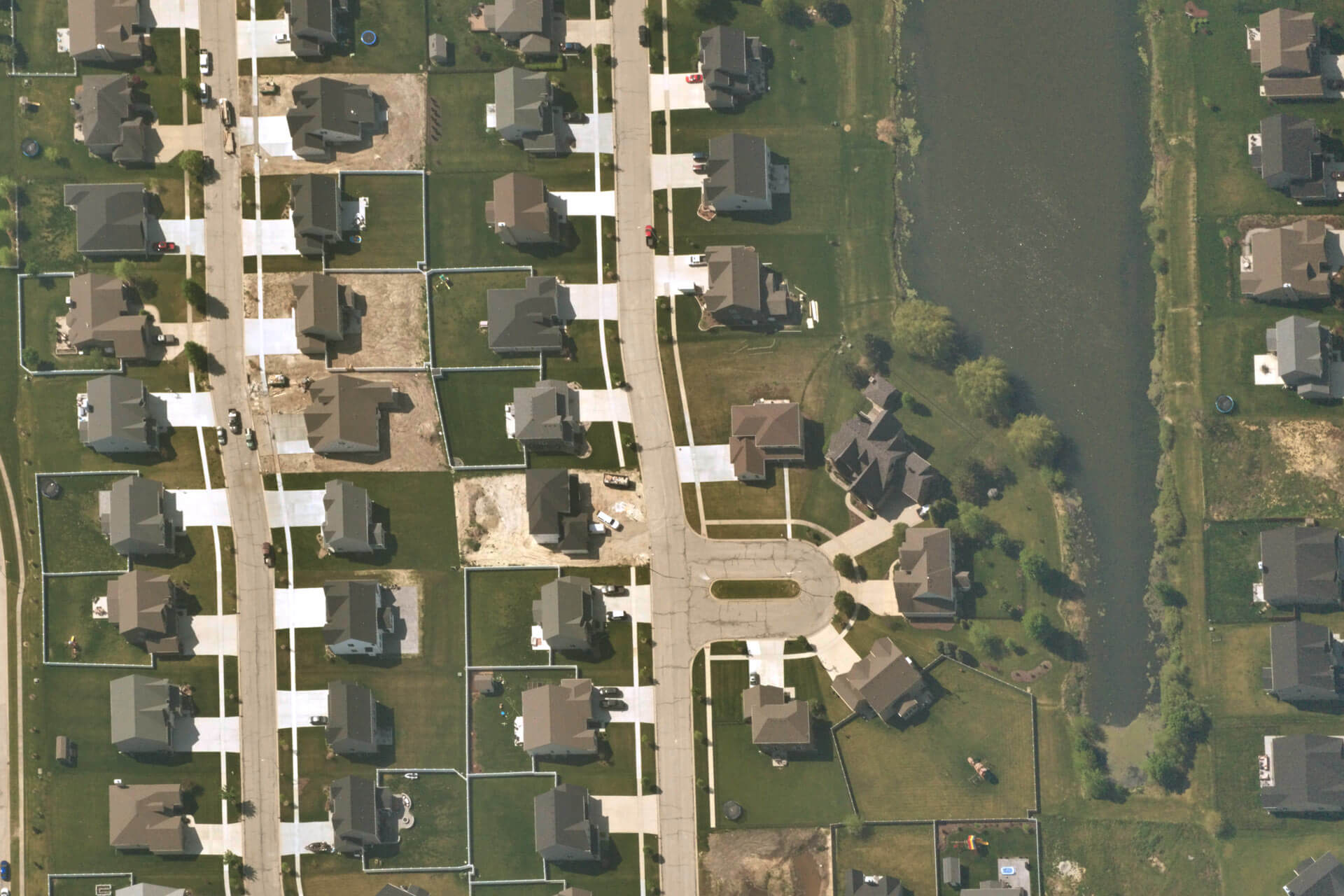Ignasi Lluch doesn’t want to talk about technology. He wants to talk about process.
“I studied design techniques and systems engineering. People think a lot about content and details. A lot of engineers’ motto is, ‘The devil is in the details.’ But when you’re more of a designer or systems engineer, the devil is in the interfaces. And they’re critical. Because how do you structure your design processes when you’re on your white page and you have a gazillion options? Where do I even start?”
And with that, Ignasi Lluch, Chief Technology Officer and Head of Product for Near Space Labs, dives right into answering the big questions. Where do you start? It turns out that even that deceptively simple question takes thoughtful consideration.
“When you’re in your first phase of product design or engineering design, you think, let’s go wide, let’s generate a large scope of possibilities,” he says. “How do you choose where to go? Because the problem in engineering is you have a super long project, especially hardware. In hardware, you’re going to start a project and you’re going to have your result in a year. In the meantime you’re building, talking to vendors, screwing nuts and bolts, testing, and it doesn’t work, so you change this and that. But there are decisions you made a year ago, like going with Design A instead of Design B, that are going to bite you in the ass all the time! So you have to be very smart about how you make decisions.”
Making smart decisions is at the core of Ignasi’s work with Near Space Labs. In his role, he wants to reinvent process itself to fit the company’s vision of cutting edge yet accessible and affordable technology. At the same time, he’s interested in solving some of the age-old problems that he’s encountered in his years working in the aerospace industry. He began thinking about this early in his career.
“I studied aerospace in Barcelona, with a focus in satellite engineering. And then I went to the European Space Agency: more satellites. And then my PhD in space systems engineering: more satellites. I was working a lot with satellite communication. Satellites in constellations not only talk to you, but they talk between themselves too, kind of like a switch phone. I was like the operator, switching the cables. So I had this know-how, and I was interested in improving space communications.”
Like others on the Near Space Labs team, Ignasi quickly encountered the limitations of satellite technology, and he wanted to be part of the next generation of aerospace technologists solving these problems. That led him, naturally, to Russia.
“In 2011 Russia opened the Skolkovo Institute of Science and Technology, and in 2013 they made me a very good PhD offer. I realized this was where I wanted to be, because they were doing some very leading edge research with satellite communications and constellations.”
What seemed like the next logical step for his education and career path in satellite communication technology led to a fateful meeting: one of his colleagues at Skoltech was Rema Matevosyan. He didn’t know it yet, but their research would lead them down the unlikely path away from satellites and toward balloons.
“At some point during our research, we were launching balloons to test these communication technologies, because launching a balloon is easier than launching a satellite. We thought, ‘Oh, we have this radio technology that we want to test, let’s put it in a balloon.’ We’d drive out into the Russian tundra to launch our balloons. Russia is very particular about their airspace, so we’d have to go out into the nothingness to launch, and thankfully there’s a lot of that there!”
Russia’s challenging climate didn’t just test the capabilities of Ignasi and Rema’s balloons. It also prepared them for some tough questions from future customers.
“We’d get out there and it was -20°! It was quite a trial by fire, but we got used to it, and now we have real customers who ask, ‘We’re interested in Oregon, can you fly your balloons in Oregon?’ And I’m like, ‘No problem!’” he says, laughing.
After testing their satellite technology with balloons, Ignasi and Rema started to ask themselves: Do we really need the satellites at all?
“In our PhD work, Rema and I were studying the limitations of satellites, as well as this other track: balloons and radios. Eventually these two ideas came together, because we were testing space hardware by launching satellites, and we thought, why not place the hardware in balloons and try to cover the satellites’ limitations? Because of course, balloons are much cheaper than satellites, and we can work faster with them. That was sort of the eureka moment.”
That eureka moment planted the seed that would eventually become Near Space Labs. After they left Skoltech, Ignasi and Rema, along with Ignasi’s old friend and colleague Albert Caubet, started the company that would utilize the deceptively simple balloon technology to solve some of the satellite industry’s biggest problems.
But it’s not just the balloons that make Near Space Labs different. After all, Ignasi is dedicated to process first and foremost, and you can track this dedication from the idea to test satellite technology with a balloon to how the company does its testing today.
“In super large projects, you have hundreds of people you have to organize, doing documentation, doing drawings. In the early part of my career, that’s what I was being trained for,” he says. “And then suddenly, when we started Near Space Labs, I only had three engineers, and we had to build something very quickly. So what we needed to do was basically consider the whole set of processes and only pick the ones we needed, nothing more.”
This isn’t merely streamlining a known testing process — Ignasi and his team are trying something completely new. They’re taking the very concept of testing and taking it out of the lab and putting it into the sky.
“A great thing about balloons is that we can do a lot of tests very quickly. So we design for testing, and build something that we can verify very quickly, rather than being on our computers checking if something is going to work through simulation after simulation. We don’t do that! We think, ‘Ok, we feel like this is going to work, let’s just fly it!’ No simulation, just real life, you know? I think that’s kind of intuitive for a lot of people, but it’s kind of an epiphany for an engineer!”
This approach isn’t just good for the company’s bottom line. Ignasi is finding that it’s building relationships between Near Space Labs’ technologists and the very people for whom they’re building.
“I’m very proud of this, because my engineers will come to me and say, ‘Do we really have to build this shiny object? Let’s simplify the whole thing!’ And I’m like, Yeah! Let’s do it. Part of our culture that we’re growing is that engineering has a connection to product and business, and they understand who our customers are. So they’re really into making it work for the customer.”
When asked about the future of Near Space Labs, Ignasi doesn’t hesitate.
“I think the most spectacular part of our decade-long vision is stratospheric supremacy. We want to be the company that has the most vehicles and the most advanced vehicles in the stratosphere. We’re going to get there with more advanced balloons that can stay in the air longer. And we’re the company to do that, because I have absolute trust in my co-founders and in everyone we hire. I know we are going to use this technology responsibly.”
It’s not just a hunch. Ignasi’s relationships with his co-founders go way back: professionally, but in other unexpected and revealing ways as well. He knows they are the right people to shoulder the ethical responsibilities of an aerospace business.
“It comes down to having known my co-founders for a very long time. I’ve known Albert since the time of my bachelors degree, and we’ve been rock climbing together and belaying each other, so we literally trust each other with our lives!”
And then there’s Rema.
“I was a foreigner in Moscow, I didn’t speak much Russian. Moscow can be a hard city, not only the climate, but it’s a big metro place, it has all the problems of large cities. Rema had been living in Moscow for much longer than me, and she had a better understanding of the environment there. At the beginning she was just a PhD colleague, but she was very supportive. We built up a really good working relationship while working on our PhD’s.
“And then there was a situation where I was tossed out of my apartment, because someone messed up the contract, and long story short I’m on the cold Moscow street! I’m a PhD student so I know a few people but not many, and Rema was there, helping me move my stuff, letting me stay at her place. And that makes a difference. Because there are people that will help, but when it’s nine o’clock at night and you need a place to crash with all your stuff, not everyone will be there. But she was.”
It turns out that even when you’re building cutting edge technology, and even when you’re sending that technology into the stratosphere, what matters most is the people behind it all. It’s people that will drive Near Space Labs into the future. And Ignasi Lluch has every confidence in those people.




